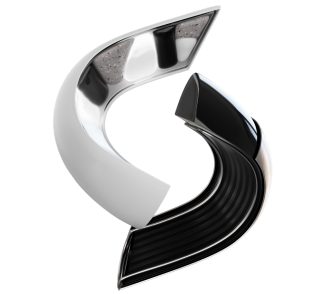For those who prefer to listen rather than read, this article is also available as a podcast on Spotify.
Contents:
If you’re stuck on a healthcare app idea and completely stuck, believe me, I get it. You’re excited, absolutely, but now confronted with a slate of questions. Where do you start? How do you even know what features are even going to be important? And HIPAA? Can you just Google it, or is it eventually going to bite you back?
Designing such an app is not like designing a to-do list. There is more on the line; for example, people’s health is at risk. That is why it is important to get it right: from the technical perspective, the legal implications, right through to user experience.
There is a path to proceed without burning out or burning through all your budget. Hold on, and I’ll show you how to develop a healthcare app, walk you through the actual process, dissect the pitfalls people make, and how you can stay clear of them before they happen.
Why Invest in Healthcare App Development?
Why bother to make this application in the first place? It looks philanthropic: helping people with their health care, making life easier for patients and doctors. There are definitely less involved ways of making money, right? Like selling goods online or developing another social networking application.
If even now you can’t decide whether to dive into this market, here are some credible reasons to really think about doing so.
- The market is growing like crazy
Seriously, it’s not losing momentum. More people are using smartphones and wearable devices to track their health. Beginning 2023, the global digital healthcare market will reach USD 420.08 billion. That’s the demand at your doorstep.
- People are tired of broken systems
Raise your hand if you waited two weeks for an appointment with a doctor and then wasted seven minutes in the room. Medicine is full of friction: waiting, confusing forms, and poor communication. Apps can take at least some of that away. And once you take actual frustrations away, people will use your product.
- You can make a difference
We all want to build something that matters. Helping someone with anxiety, reminding them to take medication, or connecting rural patients with specialists—your app could really improve someone’s life.
- Investors are paying attention
Health technology startups are not short of funding. No, in fact the contrary is the case. Big players like hospitals, insurance companies, and even pharmaceuticals are looking to explore the potential to create a healthcare app. So think long-term, and this market provides you with options.
- It’s easier to begin than you imagine
You don’t need a medical doctorate or a battalion of data scientists to begin. With cloud computing, AI software, and no-code tools, you can rapidly and affordably prototype your idea. Pilot small, test your hypothesis, and scale smartly.
- Telemedicine isn’t going away
Post-pandemic, virtual care became mainstream. People got used to video consultations, digital prescriptions, and remote monitoring. If your product fits into that ecosystem, you’re already riding a wave.
- Remote care is becoming the norm
Wearables and sensors make monitoring patients from home much easier. This reduces hospital visits, lowers costs, and improves quality of life. If your app helps with remote monitoring or chronic disease management, you’re hitting a sweet spot.
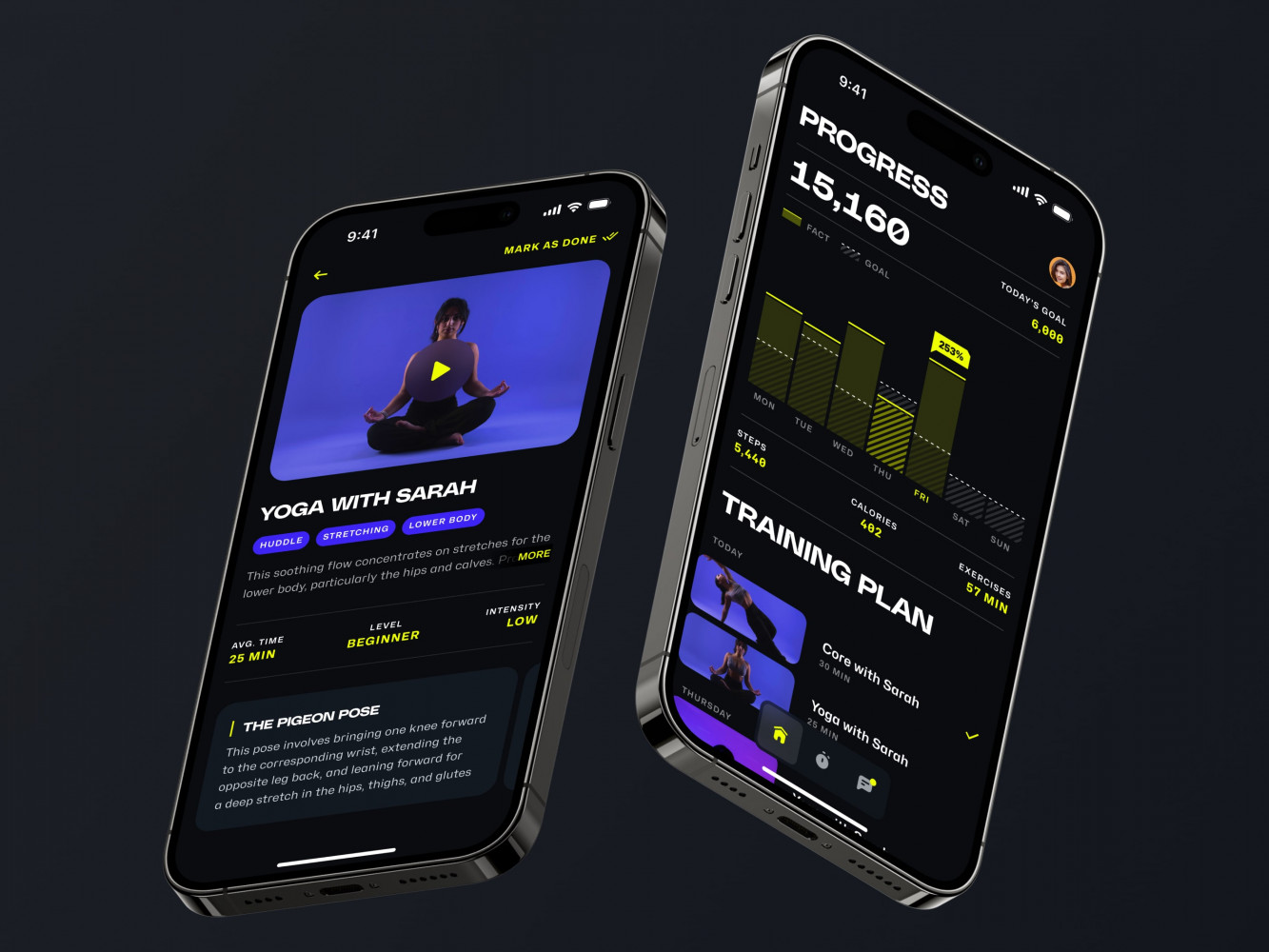
Mobile App for an Adaptive Fitness Guide by Shakuro
Types of Healthcare and Medical Apps You Can Build
So you’re sold on the idea that this type of app is worth your time. Now comes the next big question: what kind of application should you actually build?
For Providers and Institutions
Let’s start with one of the most profitable and often overlooked angles: apps for healthcare providers and institutions.
EHR/EMR Systems
These are basically the digital backbone of clinics and hospitals. It’s the system where doctors log patient info, track treatments, assign tasks, and manage billing.
Now, building a full EHR from scratch? That’s heavy. However, if you have limited resources, you can focus on a niche version, like one tailored specifically for physical therapists or mental health clinics. Smaller, easier to launch, and still super valuable.
Clinical Communication Tools
Hospitals are full of smart people, but communication between them is often broken. Nurses pinging doctors through outdated pagers. Shift changes without proper handoffs. It’s wild how much gets lost in translation.
So, you can create a healthcare app that connects clinical teams in real-time with secure messaging, shift logs, task delegation, and even integrations with existing systems. Just like Slack, but HIPAA-compliant and built for medical teams.
Medication & Treatment Management for Providers
Doctors prescribe meds, but what happens after? Do patients fill the prescriptions? Are they taking them correctly? Side effects?
A product that helps providers monitor medication adherence, check for drug interactions, or receive alerts when patients skip doses—that would be huge. Especially for chronic disease management. Some tools already exist, but many are bloated or hard to use. A clean, intuitive interface with real-time insights could win over even the most skeptical clinicians.
Telemedicine Apps
They connect patients with providers remotely: via video, voice, chat, or even asynchronous messaging (like sending photos or symptom logs for review later). You help people from remote places get treatment. Or, with your product, a rural GP can consult with a specialist hundreds of miles away. All these cases improve people’s lives.
Clinical Decision Support Systems (CDSS)
Healthcare specialists need fast, reliable insights, not Google searches or outdated textbooks.
Tools like CDSS analyze all data: patient history, lab results, and vitals, and give clinicians actionable recommendations. Adding AI to learn from real-world cases over time is even better.
For patients and consumers
We’ve talked about apps for providers—the people inside the healthcare system trying to make it work better. Now let’s zoom out and look at the other side of the coin: apps for patients and consumers.
Mental Health & Wellness Apps
Mental health is exploding as a category. And for good reason, because people are more open about their struggles, and traditional therapy isn’t always accessible or affordable.
So you can make plans on how to develop a healthcare app that can fulfill one of these pressing tasks: mood tracking, guided meditation, CBT exercises, journaling prompts, peer support communities. Or even direct access to licensed therapists or coaches. The trick is making it feel safe, supportive, and not too clinical. People don’t want another doctor’s office vibe; they want something they can turn to when they’re having a rough day.
Fitness & Chronic Condition Tracking Apps
Diabetes, asthma, heart disease, or autoimmune disorders—managing a long-term condition is exhausting. You have to track numbers, watch symptoms, adjust routines, and hope everything stays balanced.
Tracking apps can include glucose logs, workout history, sleep data, food intake, hydration levels, etc. Some even integrate with wearables like Fitbits or Apple Watches. What makes these products special is the personalization level. For example, the application can learn your patterns and warn you before a flare-up happens. Or send gentle nudges when you’ve been less active than usual.
Maternal & Postpartum Health Apps
Pregnancy and early parenthood are wild, full of excitement, anxiety, and a million questions. That’s why maternal health apps are so valuable. They guide users through each week of pregnancy, offer checklists, remind them about prenatal vitamins, and even provide postpartum mental health support.
Some applications go deeper, offering video consultations with midwives, connecting moms with local resources, or giving newborn care tips tailored to their baby’s age.
Medication Management Tools
If you’ve ever had to juggle multiple prescriptions, especially with specific timing, dosages, and interactions, you know how easy it is to mess up. Even small mistakes can lead to big problems.
Medication tracking apps help users set reminders, scan pill bottles, log side effects, and sometimes even connect with pharmacies. The best ones also sync with caregivers or family members, which is huge for elderly patients or those managing chronic conditions.
For example, take my case. My gastroenterologist prescribed me several meds I had to take three times a day, some before meals, some after. Can’t really imagine how I’d juggle them all without a medication management app…
If you’re trying to decide how to build a healthcare app and what kind, here are two simple comparison tables that break down the differences between provider-facing and patient-facing apps.
Provider-facing apps
| App Type | Goal | Common Features | Key Regulations |
| EHR Systems | Digitize patient records, streamline workflows for providers | Patient charts, billing, appointment scheduling, lab integrations | High: HIPAA, GDPR (for EU), sometimes FDA clearance for certain modules |
| Clinical Communication Tools | Improve coordination between doctors, nurses, and staff | Secure messaging, task assignment, shift handoffs, alert systems | Medium to High: Must be HIPAA-compliant, especially if handling PHI |
| Medication & Treatment Management Tools | Help providers track prescriptions, dosages, and treatment plans | Drug interaction checks, e-prescribing, care plan tracking | Medium: Depends on whether it handles PHI |
| Telemedicine Apps (Provider Side) | Provide remote consultations and provider collaboration | Video visits, e-prescriptions, integration with EHRs, multi-provider consults | High: HIPAA, secure data transmission, state licensing considerations |
| Clinical Decision Support Systems | Aid in diagnosis and treatment planning using data | Symptom analysis, risk scoring, drug alerts, guideline-based recommendations | High: Especially if used for diagnostics; may require FDA approval depending on use case |
Patient-facing apps
| App Type | Goal | Common Features | Key Regulations |
| Mental Health & Wellness Apps | Provide emotional support and coping tools | Mood tracking, guided sessions, journaling, peer communities | Low to Medium: HIPAA only if connecting with therapists or storing PHI |
| Fitness & Chronic Condition Tracking Apps | Help users monitor physical health and habits | Activity logs, symptom tracking, wearable integrations, trend reports | Low to Medium: Only HIPAA if integrated with medical providers or EMRs |
| Maternal & Postpartum Health Apps | Guide women through pregnancy and early motherhood | Week-by-week updates, checklists, fetal movement tracking, mental health screening | Medium: May involve PHI if connected to clinics or midwives |
| Medication Management Tools | Help patients track meds and avoid errors | Pill reminders, refill alerts, side effect logging, caregiver notifications | Medium: If syncing with pharmacies or providers, HIPAA compliance may apply |
A few quick thoughts:
- Provider-facing apps tend to be more regulated because they deal directly with sensitive clinical data, diagnoses, and treatment decisions. That means more paperwork, but also more trust from institutions once you’re compliant.
- Patient-facing apps are generally easier to build and launch, but have a different challenge: user retention. People might download your wellness app once, but getting them to stick around? That’s another story.
- Some apps actually sit in the middle, like medication management tools or telemedicine platforms, and can serve both providers and patients. That hybrid approach opens up interesting business models.
How to Build a Healthcare App: Step-by-Step Process
Step 1: Define Your Idea
Before you start looking for a development agency and think about:
- Who is it for? (Patients, nurses, doctors, or busy parents?)
- What are you trying to solve?
- Why hasn’t it been solved well yet?
To make it easy, write down a short user story. Like:
“Ann is a 12-hour shift nurse. She always forgets to log patient notes between rounds. She requires an effortless means of logging them without disrupting her workflow.”
That sort of accuracy will save you time down the line, when you’re calling on developers and can’t quite explain what you need.
Step 2: Sort Out Compliance & Legal Stuff Early
You’ll at least need to consider:
- HIPAA compliance (if you’re handling protected health information in the U.S.)
- GDPR (if you have European users)
- FDA regulations (only if your app is used for diagnosis or treatment)
Yes, it sounds terrifying. But you don’t have to magically become a legal right in one night. Just make sure you know what does apply to you and build security in from the start (encryption, access controls, etc.). And hiring a lawyer or consultant with healthcare compliance know-how is a huge plus.
Step 3: Define Your MVP
How to make a medical app without breaking the bank? The answer is MVP. It’s the smallest version of your app that still solves a real problem, but not “half-baked.”
Let’s say you’re building a mental health journaling application. The full version might have AI insights, mood graphs, therapist integrations, etc. But your MVP might just be:
- A simple daily prompt
- Text entry
- Mood rating
- Export feature
That’s sufficient to attempt your concept without exhausting yourself in advance. So, kill features ruthlessly. Ask: “Can this wait until version two?” If so, delete it.
Step 4: Design UI/UX with Accessibility in Mind
Healthcare product interfaces are sensitive: they need to show a great deal of information and stay usable at the same time. To achieve that effect, you need to focus on:
- How users transition from screen to screen
- Where they enter or view information
- What actions they take most often
Simplicity and minimalism here are better than fancy designs. If you’re building for providers, remember: they hate clunky tools. Speed and clarity matter more.
Step 5: Build, Test, Repeat
Pair with trusted developers to turn your designs into working code. That’s the core features and basic UI. When you create a healthcare app, test it constantly, even in the early stages. Show it to people from the target audience and jot down where they are getting stuck. It matters because these products must perform flawlessly—they are tied to people’s health.
What to use? There isn’t a one-size-fits-all stack, but here’s a rough outline based on what our team uses:
Backend:
- Firebase or AWS Amplify
- Node.js + MongoDB or Python/Django
- Consider HIPAA-compliant hosting options
- React Native or Flutter
- Swift for iOS-only apps
- Kotlin for Android
Step 6: Launch and Collect Feedback
When you’re ready, go live, even if it’s just in one app store or with a small group of users.
Use soft launches to:
- Fix last-minute bugs
- See how real people use the app
- Adjust the marketing strategy
Set up feedback channels:
- In-app surveys
- Email follow-ups
- Social media polls
Remember: your first version isn’t perfect, and that’s okay. The goal is to learn fast and improve.
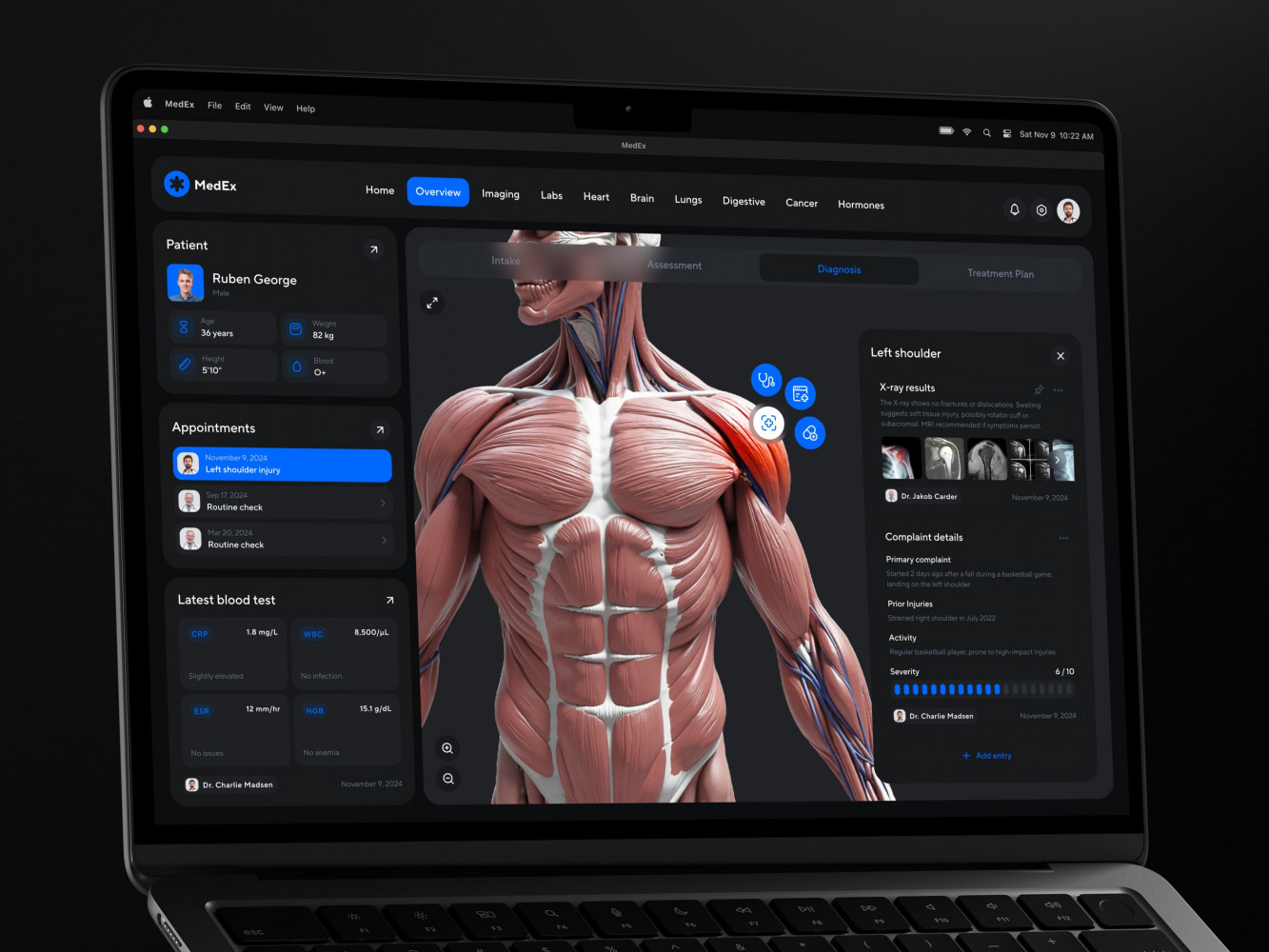
Medical Management Software Dashboard by Shakuro
Must-Have Features of a Modern Medical App
You know how to develop a healthcare app. But what should you pack in? You could go wild and throw in AI diagnosis and live consultations, but if you’re just starting out, it’s better to focus on the must-have stuff. The features that make your app usable, trustworthy, and actually helpful.
Here’s a list of core features every modern medical app should consider. Some are non-negotiable, others depend on your specific use case, but all of them are based on real-world pain points.
User Authentication & Profiles
Different people are using your app: doctors, nurses, patients, caregivers, etc. Do they all need the same level of access and login page? Apparently, they don’t if you want to keep the sensitive data safe.
To sort everything out, you need:
- Separate user roles (doctor vs patient vs admin)
- Profile setup (with relevant info like specialty, condition, age, etc.)
- Easy login/signup flow (including social or SSO options)
Still, don’t make people re-enter their info every time they log in. That’s just annoying.
Appointment Management / Scheduling
Even if your app isn’t focused on booking visits, scheduling tends to come up sooner or later, especially in provider-facing tools.
Must-haves:
- Calendar integration
- Booking, rescheduling, cancellations
- Reminders via SMS/email
- Waitlist management
- Sync with EHRs or practice systems (if applicable)
To make the app even more convenient, add AI-powered search or smart matching, like suggesting the right specialist based on symptoms. This will make the patient’s life much easier.
Teleconsultation / Video Visits
Post-pandemic, this is pretty much expected in any serious healthcare app. But don’t overcomplicate it; you don’t need a streaming platform. Just ensure the call connects and doesn’t drop. That will be enough for the beginning.
Features to include:
- In-app video calling
- Screen sharing (for labs, reports, etc.)
- Waiting room function
- Recording (with consent)
- Low-bandwidth support
Medical Records / Data Tracking
Patients need to see their history. What doctor did they visit last time? What tests did they do? At the same time, providers require the possibility to review that history quickly. So, yes, some form of record tracking is usually a must.
Depending on your audience, consider:
- Medical history logs
- Medication lists
- Lab results
- Symptom tracking
- Progress charts (weight, blood sugar, mood, etc.)
If you’re targeting chronic illness, this becomes even more critical. For example, in a situation where a doctor manages diabetes without being able to track glucose levels over time. Inconvenient, and even dangerous.
Reminders & Notifications
It’s easy to forget about meds, appointments, hydration, exercise… You name it. Especially if you feel unwell. So, when you decide to create a healthcare app, put notifications on top of the list. Make them friendly, not naggy. No one wants their phone yelling at them first thing in the morning.
What to build:
- Customizable alerts (daily, weekly, etc.)
- Smart triggers (e.g., remind after missed dose)
- Push notifications + SMS/email backup
- Snooze/reschedule option
Secure Messaging / Communication
Communication is key, and since the data is sensitive, it should be secure. Quite often, hospitals still use WhatsApp for shift changes. Not safe, not compliant, but very common. There’s space here for something better.
Include:
- Encrypted chat
- File sharing (reports, scans, etc.)
- Read receipts
- Group chats (for teams or families)
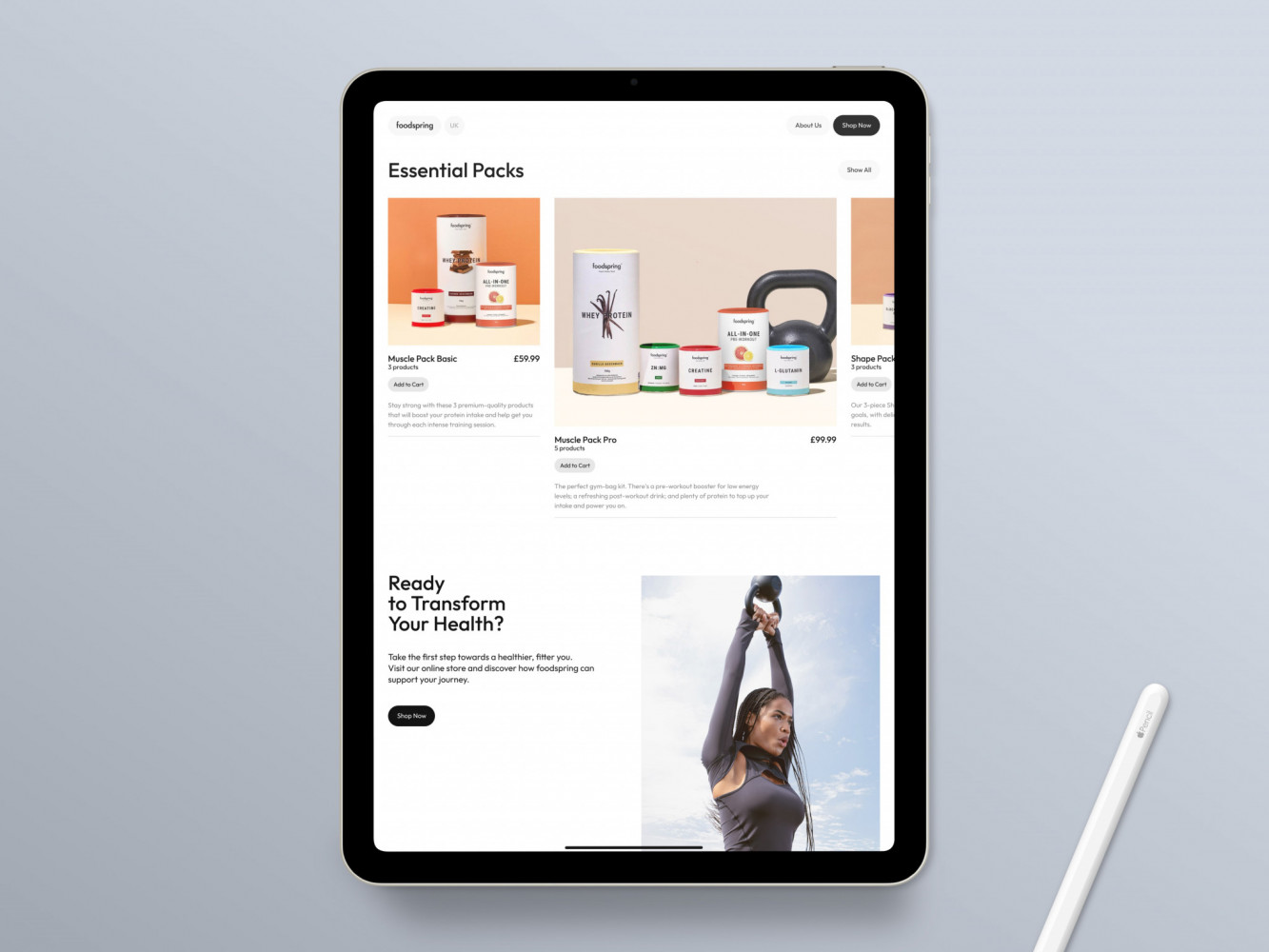
Design for a Supplements and Accessories Brand by Conceptzilla
Key Technologies and Trends in Healthcare App Development
Trends change like almost daily, and some features become outdated really quickly. How do you create a medical app that stays with the trend? What technologies should you implement in your product? Let’s take a look at the latest trends in the healthcare industry.
Artificial Intelligence & Machine Learning
AI surrounds us now. It helps automate routine tasks in the office and at home. For healthcare, Artificial Intelligence can accomplish the same and allow doctors to focus on more pressing problems.
Where do you put AI in?
- Symptom screening: Chatbots can ask smart questions based on patient input and help before the doctor’s appointment.
- Predictive analytics: Finding patterns in patient data to predict flare-ups or hospital readmission.
- Image recognition: Dermatology or radiology apps are utilized to detect lung nodules or skin lesions.
- Personalized recommendations: Diet or exercise prescription based on medical history.
Training is the sole disadvantage here. For good models, it needs data, and healthcare data is not always readily available. And secondly, humans still desire a human doctor in the equation.
Wearables & IoT Integration
At least 44% of Americans sport health-tracking wearables every day. Apple Watches, Fitbits, Oura Rings—and users expect their apps to work with them.
So, what should your app support?
- Syncing heart rate, sleep, steps, and oxygen levels
- Alerting users if something’s out of place
- Manual entry fallback (not everyone wears a wearable)
But don’t force them to integrate. Let users choose what data they submit and why.
Blockchain for Data Security
Still early days, but definitely one to keep an eye on, especially if you’re working with sensitive data and compliance, because it makes security more stringent.
Where might it fit in your app?
- Secure patient records: Immutable, decentralized storage of medical records.
- Consent tracking: Showing who looked at what information and when.
- Drug traceability: Suitable for pharma-specific apps or supply chain software.
Cloud Infrastructure & APIs
Back in the day, apps were on big servers at hospitals. Now? A lot of them run in the cloud.
Why bother?
- Faster rollout
- Better scalability
- Easy integration with other systems (EHRs, labs, etc.)
Services like Firebase, AWS HealthLake, or Google Cloud Healthcare API give you enterprise-grade infrastructure without the need for a DevOps team.
And APIs, especially FHIR-based ones, are easier than ever to integrate into existing systems. For example, you can integrate your app into a hospital’s EHR without having to code everything from scratch.
Genomics & Personalized Medicine
They apply genomic information + machine learning to generate tailored suggestions. Some even partner with the labs to return results within the app. It’s still early days for consumer genomics apps, but it has massive potential, with DNA tests becoming cheaper and more mainstream.
Apps that offer:
- Genetic risk scores
- Tailored diets or exercise regimes
- Drug sensitivity predictions
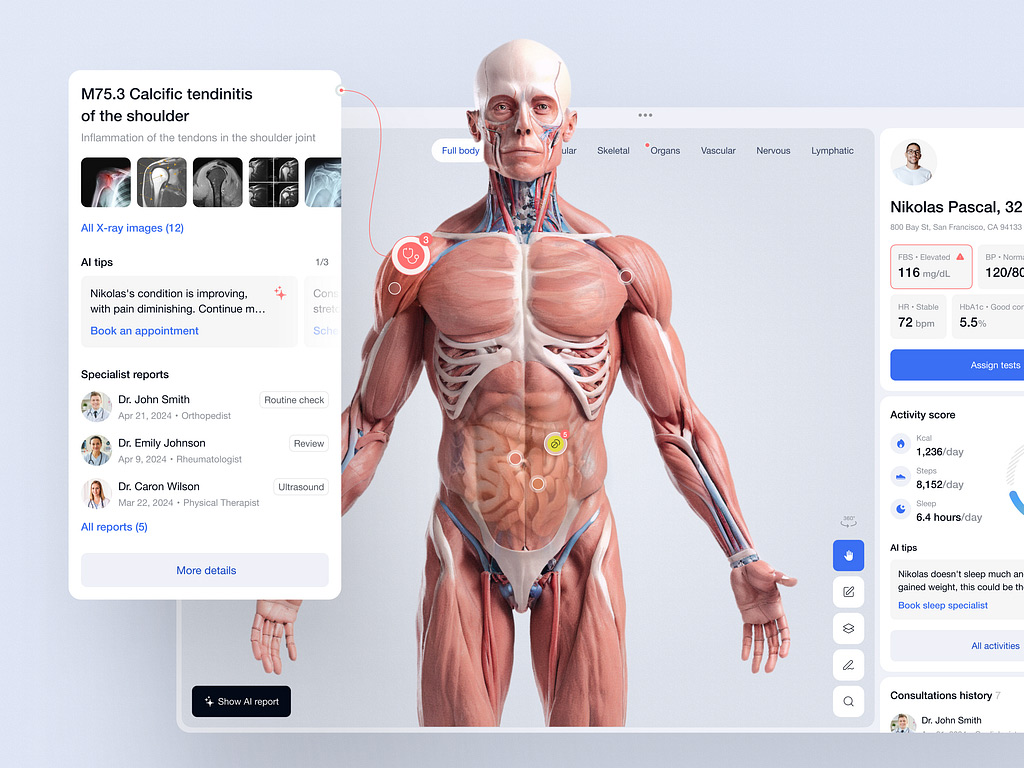
Doctor’s Dashboard Design Concept by Shakuro
Compliance and Data Security Requirements
As I said before, in healthcare, you constantly deal with sensitive data. And if something goes wrong, like someone leaks user data, you will be in trouble. Your reputation is gone. Your budget is suddenly paying legal fees.
You see, compliance is about building trust, protecting people’s privacy, and making sure your app doesn’t become a liability before it even hits its stride.
So, how to develop a healthcare app that is actually compliant? What rules do you need to follow?
HIPAA (Health Insurance Portability and Accountability Act)
It covers any health data that can identify a person (Protected Health Information or PHI). Anyone handling medical records, appointments, prescriptions, or communication between providers/patients should take it into account. You are included, yes.
What it requires:
- Secure transmission/storage of data
- Access controls (who sees what)
- Audit logs
- Encryption at rest and in transit
- Signed Business Associate Agreements (BAAs) with third-party services
HITECH – Health Information Technology for Economic and Clinical Health Act
Basically, HITECH is HIPAA’s more aggressive cousin. It strengthens enforcement and increases penalties for violations. If you violate HIPAA, fines under HITECH can go from thousands to millions of dollars, depending on how bad it was and whether you knew about it.
It encourages the adoption of electronic health records (EHRs) and supports the secure exchange of health information, pushing the entire healthcare system into the modern tech era.
GDPR – General Data Protection Regulation
It applies if you have users in Europe, even if you’re based elsewhere. The requirements cover any personal data, not just health info. And GDPR treats health data as “sensitive,” so even if you’re not in the U.S., collecting things like symptoms or medications means stricter rules.
Requirements:
- Explicit consent for data collection
- Right to access, delete, or export personal data
- Data breach notifications within 72 hours
- Appointing a Data Protection Officer (sometimes)
Other standards you might encounter:
- ISO/IEC 27001: International standard for information security management systems. Useful if you’re aiming for global clients or hospital contracts.
- SOC 2 Type II: Common in SaaS apps. Focuses on data security, availability, and confidentiality.
- FDA Regulations (Class II Software): If your app makes diagnostic or treatment decisions (e.g., an AI symptom checker), it may fall under FDA oversight.
- CCPA (California Consumer Privacy Act): Similar to GDPR, but applies only to California residents.
Best practices for healthcare app security
✅ Know what kind of data you’re handling. Is it identifiable? Is it health-related? Are you storing it, transmitting it, or both? If yes to any of these, compliance kicks in.
✅ Choose HIPAA-compliant tools. For hosting, it can be AWS, Azure, or Google Cloud. They all offer HIPAA-compliant environments, but you have to configure them right. For messaging, use secure platforms like TigerConnect or Twilio (with BAAs). Avoid tools that log personal data unless they support anonymization.
✅ Encrypt everything. For example, encrypt stored data at rest, and API calls, video visits, and others in transit. Use TLS 1.2+ for network traffic, AES-256 encryption for storage.
✅ Implement role-based access. Not everyone should see everything. Doctors can view full records; nurses might see limited details. Admins get more control than regular users.
✅ Audit logs & activity tracking. Who logged in? Who accessed what record? When did they do it? It helps you catch suspicious behavior early.
✅ Have a data breach plan. How will you detect a breach? Who gets notified? How fast do you respond? Yes, it’s scary to think about. But being prepared is better than panicking later.
✅ Get legal help even if you’re bootstrapping. Hire a compliance expert or consultant and get templates for privacy policy, terms of service, consent forms, and BAA agreements.
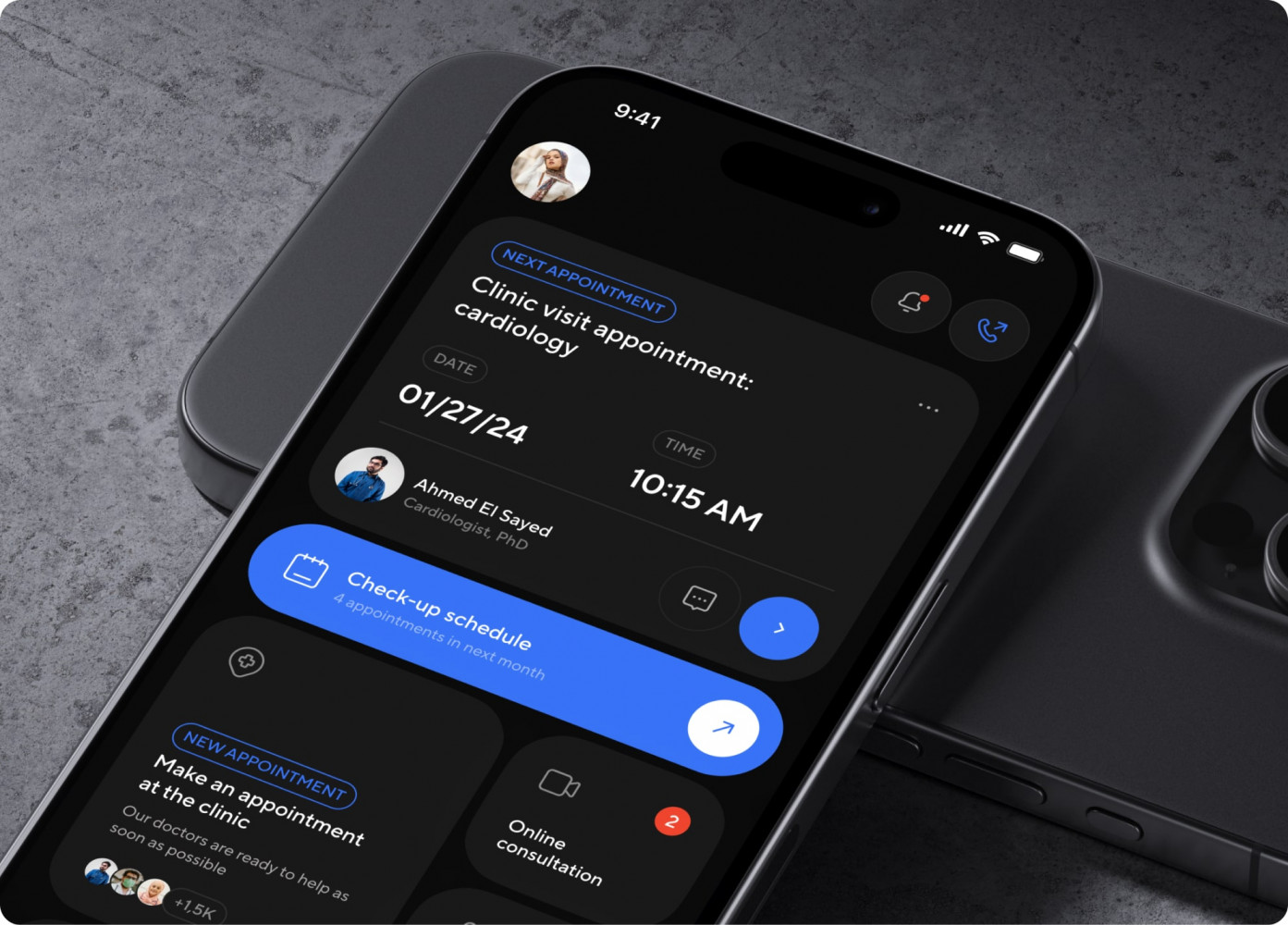
Bless You app by Shakuro
Healthcare App Development Costs in 2025
The most pressing topic of the whole post. How much do you need to spend to create a healthcare app? Are there any hidden costs you should watch for?
The short answer is—it depends.
What Affects the Cost?
Let’s start with the things that really impact the final numbers you see in the check.
- App complexity: Obviously, the features and their complexity. Is it a simple reminder tool? Or does it have AI-driven symptom checking, telemedicine, and integration with EHRs?
- Platform: Each target platform adds time and cost, because you need more resources. Most startups go mobile-first (iOS + Android), then add web later.
- Compliance needs: HIPAA, GDPR, FDA regulations. They increase dev time because every feature has to be secure by default.
- Team location & size: Hiring a solo developer from Eastern Europe? Cheaper. U.S. agency? Expect rates 2–3x higher. In-house team? Even pricier, but gives you more control.
- Cloud hosting: Providers like AWS or Firebase usually do subscriptions (starting at ~$100/month, scales up).
- Third-party services: Twilio for SMS, Stripe for payments, video APIs.
- Marketing & user acquisition: How will people learn about your app? Especially crucial for patient-facing apps.
- Maintenance & updates: Apps don’t stop needing care after launch. After the deployment, you need to release updates, upgrades, fixes, etc.
Average cost ranges for MVP and full apps
I’ll give approximate costs based on the current situation.
A simple app with reminders, static content, and minimal user interaction, like a med tracker with no login, might cost you around $10,000–$25,000.
A mid-range application, where you add video calls, messaging, appointment booking, and user profiles, will cost you approximately $30,000–$80,000.
For a full-scale healthcare platform with multi-role system (doctors, patients, admins), AI features, compliance, and cloud backend, you will need $100,000+.
Healthcare App Development Cost Comparison
Here is a table for your convenience with approximate prices based on the region. Yes, American developers tend to be more expensive, while Asian experts have cheaper prices.
| App Type | Description | Cost in the U.S. | Cost in Eastern Europe | Cost in Asia |
| Basic healthcare app | Simple UI, minimal features | $10,000 – $25,000 | $6,000 – $15,000 | $4,000 – $10,000 |
| Telemedicine app | Video calls, secure chat, appointment booking, user roles | $30,000 – $80,000 | $18,000 – $50,000 | $12,000 – $40,000 |
| Mental health & wellness app | Mood tracking, guided sessions, journaling, optional therapist connection | $20,000 – $50,000 | $12,000 – $35,000 | $8,000 – $25,000 |
| Medication management tool | Pill reminders, refill alerts, caregiver notifications | $15,000 – $35,000 | $9,000 – $22,000 | $6,000 – $15,000 |
| Chronic disease tracker | Symptom logging, wearable integrations, progress reports | $25,000 – $60,000 | $15,000 – $40,000 | $10,000 – $30,000 |
| Clinical decision support system | AI-based diagnostic tools, data analysis, rule-based logic | $60,000 – $150,000+ | $40,000 – $100,000+ | $25,000 – $75,000+ |
| EHR / EMR module | Patient records, billing, provider communication — lightweight version | $50,000 – $120,000 | $30,000 – $80,000 | $20,000 – $60,000 |
| Comprehensive healthcare platform | Multi-role system (patients, doctors, admins), telehealth, analytics, compliance | $100,000 – $300,000+ | $60,000 – $200,000+ | $40,000 – $150,000+ |
Monetization Models for Medical Apps
How to build a healthcare app and make money? Well, monetizing a medical application can be tricky, especially if you’re targeting providers or patients who aren’t used to paying for health tools. But some models work. For example:
Subscription Model (SaaS)
This is the most popular model, especially for provider-facing apps. You bill monthly or annually, with different tiers (basic, pro, enterprise). Each premium level offers features like more users, integrations, analytics, etc.
Who it is suitable for:
- EHR systems
- Telemedicine platforms
- Practice management tools
- Clinical decision support systems
Freemium + Upsell
You offer a stripped-down free version, then sell premium features (e.g., detailed tracking, reporting, integrations). Keep in mind, however, that freemium only works if your free version is actually valuable. If people don’t see value initially, they won’t stick around long enough to convert.
Best for:
- Patient-facing mental health and wellness apps
- Medication adherence trackers
- Symptom checkers
Pay-Per-Use / Per-Patient Pricing
This is a favorite in B2B healthcare use cases, where utilization is variable. It aligns incentives—if your tool reduces readmissions, hospitals will pay for it.
You charge based on the number of patients, visits, or interactions. It may be a flat fee per month or variable, depending on volume.
Who it suits:
- Teleconsultation services
- Remote monitoring applications
- Diagnostic tools
One-Time Purchase or Licensing
Not as trendy today, although still used for niche or offline uses. Users purchase a one-time download or installation fee. Or, buy a license for in-house usage (hospitals are popular).
Who it’s best for:
- Medical reference apps (anatomy guides, for instance)
- Offline clinical calculators
- Training modules
In-app Purchases & Add-ons
This is a more common model in consumer-facing apps than in provider tools. The core app is free or low-cost, with additional content or features being exchanged separately.
Who it suits:
- Mental health apps
- Meditation & mindfulness tools
- Parenting or maternal health apps
White-Labeling & Partnerships
Here, you provide your app as a white-labeled product to other institutions or businesses. The process is as follows: create the core product, enable partners to resell it under their own brand, and charge licensing or integration fees.
Who it’s for:
- Telemedicine platforms
- Chronic disease apps
- Hospital communication tools
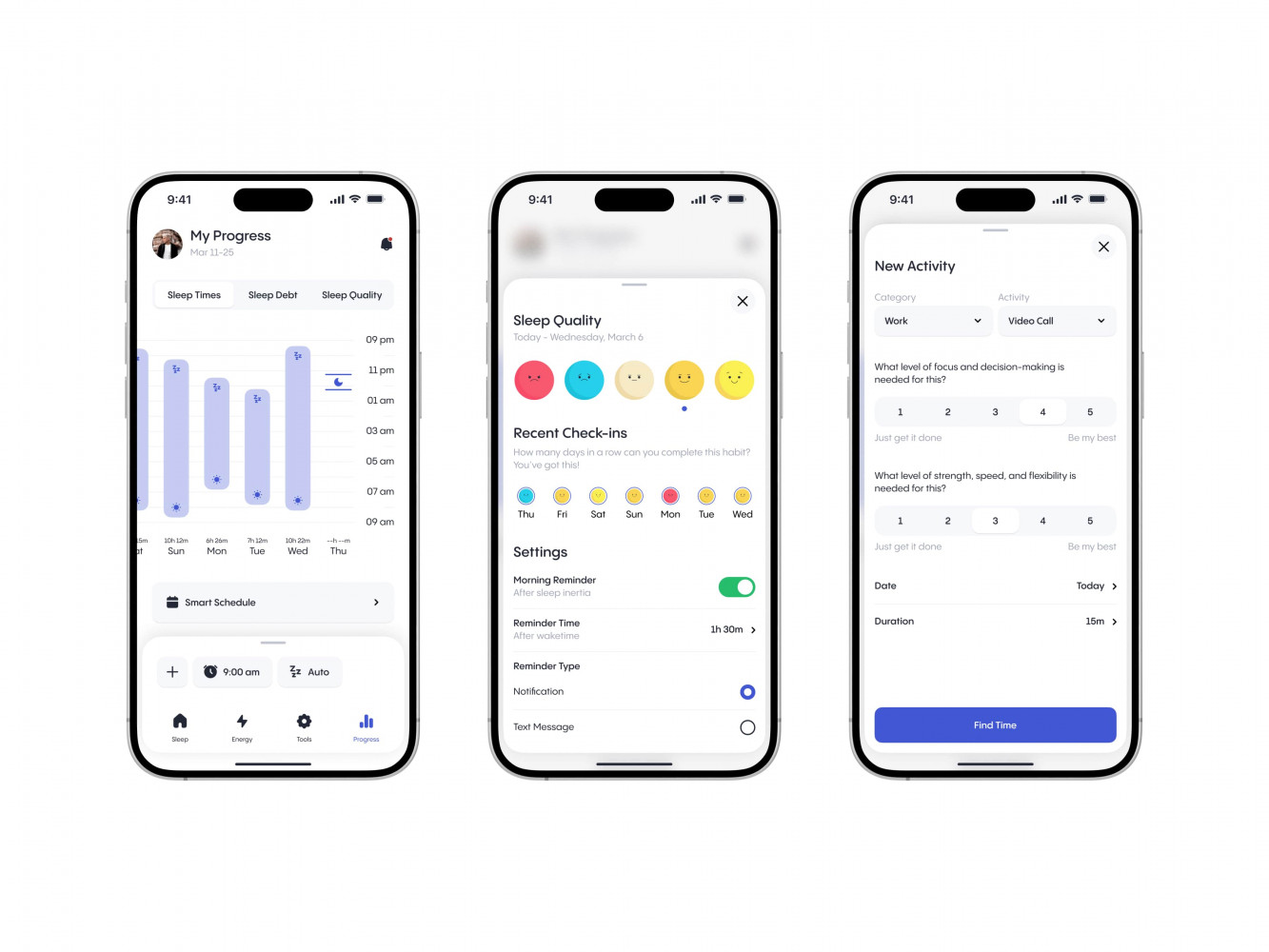
Sleeping Mobile App by Conceptzilla
Why Work with a Healthcare App Development Company Like Shakuro?
Healthcare is a very demanding industry: you need to adhere to various compliance rules, understand people’s pains, learn about institutional problems, stay current with the flow of trending technologies, etc. That’s a lot on a plate. How to develop a healthcare app without burning all your resources and, most importantly, yourself?
As healthcare app developers, we take a huge part of this burden off your shoulders. Our team has in-depth expertise in the industry, including its challenges and unique demands. This allows us to get a fresh perspective on existing solutions and bring innovation to the industry. The approach strengthens your business, makes the clinical workflows more efficient, and improves the patients’ experience.
To achieve all that, we leverage UX heuristics, reliable tech stacks, and deep market research. Speaking of reliability, the healthcare industry requires a high level of security because of personal information. Our team takes advantage of well-known service providers and encrypts all the data using security protocols like SSL.
How do we improve the patients’ experience? Well, first of all, we build an easy-to-grasp navigation, because when you feel unwell, there is little patience to fight clunky UIs. Also, there are often many dashboards, diagrams, and whatnot, which are often hard to understand without a doctor. We simplify these dashboards and make them glanceable. So the health condition is no longer a mystery.
If you need to build a responsive and easy-to-use wellness app, telemedicine system, clinical decision support platform, EHR/EMR tools, or medication management app, reach out to us.
FAQ: How to Create a Medical App
How long does it take to build a healthcare app?
Building a healthcare app typically takes 3 to 9 months, depending on complexity. Team experience, feature scope, and regulatory requirements (like HIPAA) all impact the timeline.
What are the top HIPAA compliance rules to follow?
- Privacy rule: Protect patient health information (PHI) and limit who can access it.
- Security rule: Secure electronic PHI (ePHI) with technical, administrative, and physical safeguards.
- Breach notification rule: Report data breaches involving PHI to affected individuals and authorities.
- HITECH Act Requirements: Strengthen enforcement of HIPAA rules and increase penalties for violations.
- Business Associate Agreement (BAA): Sign agreements with third-party vendors handling PHI.
Can a healthcare app be launched globally?
Yes, a healthcare app can be launched globally, but you must comply with local regulations, adapt to regional healthcare systems, and consider data localization laws.
What’s the difference between a wellness app and a medical app?
Wellness apps focus on general health, fitness, or lifestyle improvement. They’re usually not regulated, unless they claim to diagnose or treat medical conditions. Medical apps are designed for clinical purposes: diagnosing, monitoring, or treating health conditions. These often require regulatory compliance like HIPAA, FDA approval, or CE marking, especially if they handle patient data or support clinical decisions.

